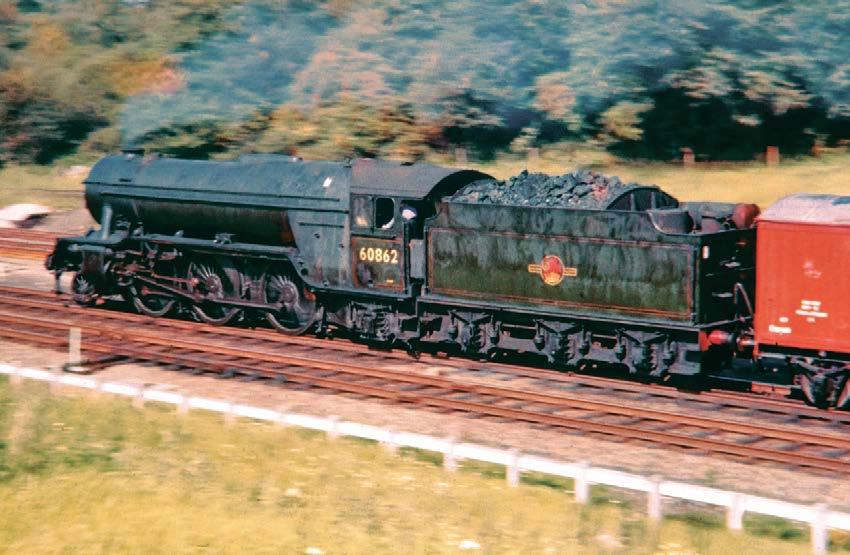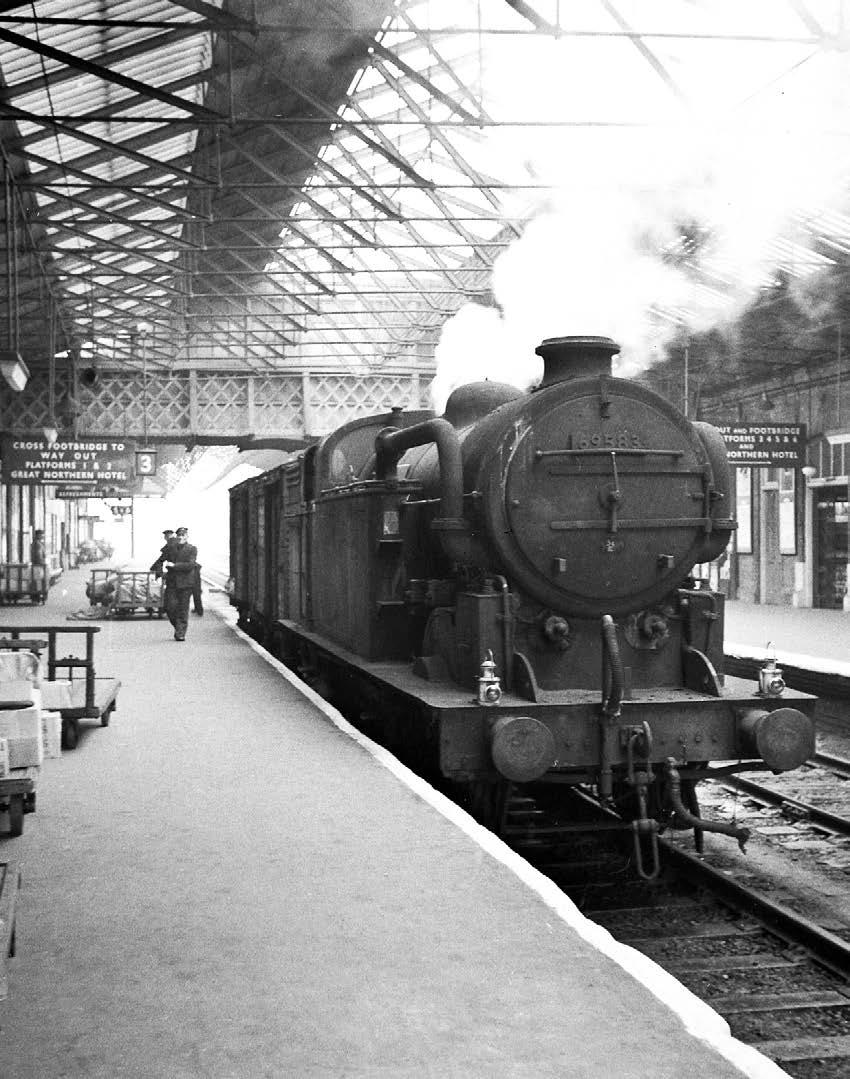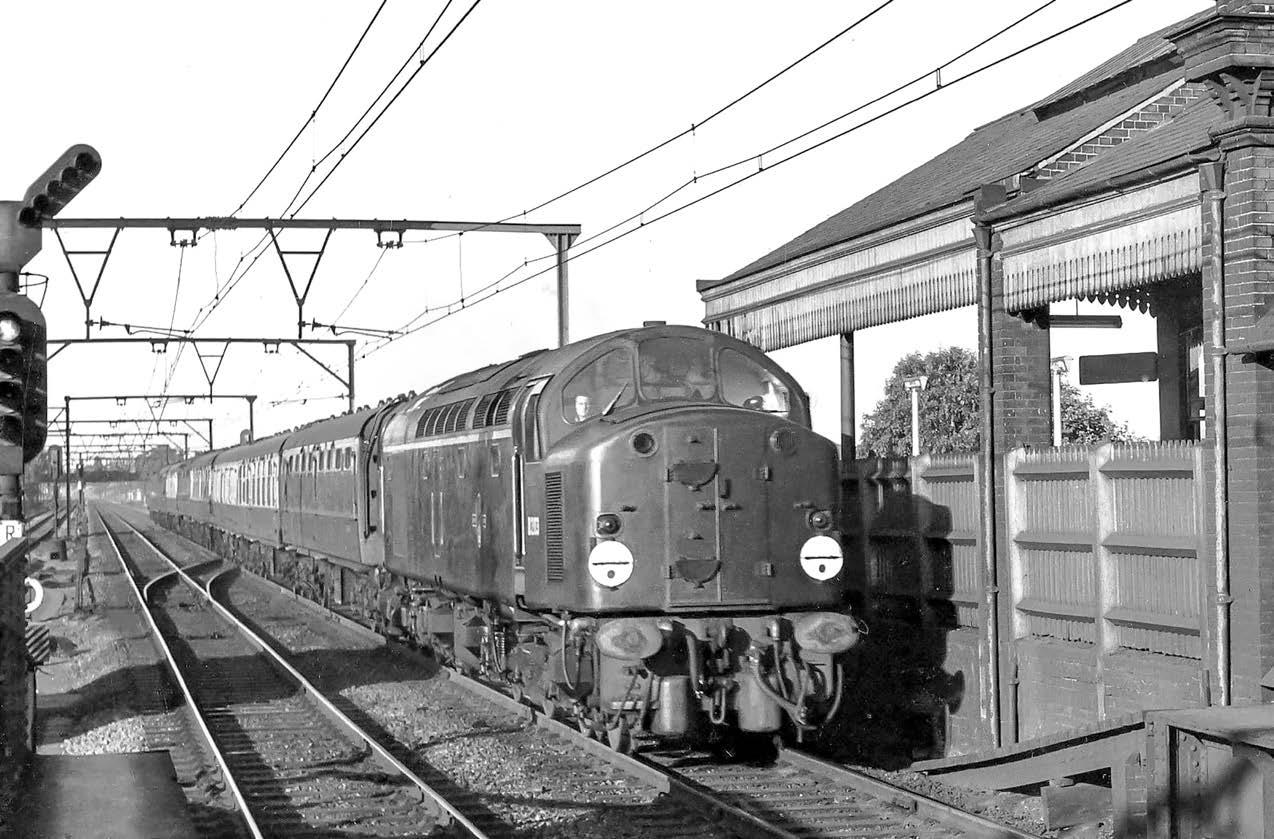EASTERN TIMES • •

The history periodical for students of the BR(E), BR(NE), LNER and pre-grouping constituents
ISSUE NO. 6 • FEBRUARY 2025


The history periodical for students of the BR(E), BR(NE), LNER and pre-grouping constituents
ISSUE NO. 6 • FEBRUARY 2025

Amongst the wartime changes at Immingham was the appearance of the first of the Improved Director Class D11 4-4-0s. No. 5508 Prince of Wales arrived at the beginning of January 1940 and would remain for 10 years. It is seen here on 10th May 1946 awaiting departure from Platform 2 at Cleethorpes with a morning stopping train, possibly for Sheffield or Lincoln. Photo: H. C. Casserley, Paul King Collection.

Below: 6th June 1936 • Unlike the D7 4-4-0s, there were never too many of the Robinson D9s allocated to Immingham or New Holland. 5112, seen here on Neepsend shed, Sheffield, is representative of the class even though in its rather nomadic LNER life it was transferred 20 times, it never found its way to Immingham. Fine looking locos, they handled the Great Central main line expresses when first introduced in the early 1900s but were superseded by larger locomotives, ending their days working semi-fast and stopping trains across the southern LNER system. Photo: H. C. Casserley, Paul King Collection.




This page: 28th February 1962 • Gresley N2 Class 3P2F 0-6-2T No. 69583 at
COMPILED BY N. E. STEAD AND ORIGINALLY PUBLISHED BY THE NORTH EASTERN LOCOMOTIVE PRESERVATION GROUP.
Notes on the surviving steam locomotives, both B.R. and Industrial, still to be found around the North-East of England in 1967.
On many occasions, I have met enthusiasts around Tyneside, who were on holiday from other parts of England, and who were not at all acquainted with the area or the best places to see steam engines at work. Such people were grateful for information which I gave them, and it seemed that there was a need for some kind of a booklet to be used as a holiday guide in this respect.
When one only has a week’s holiday, every day is precious, and there is nothing more annoying than finding out about some first class steam workings at the end of the holiday. I hope these notes will remedy that situation. If you find these notes useful, and wish to show your appreciation, please send a donation to our fund for the purchase and preservation of a J27, details of which are included in the booklet. All money from sales of this book goes to the fund.
Just one word of warning – do not expect to see streams of steam engines running about – this is 1967, and they are thin on the ground. Occasionally I have waited up to two hours for the sight of a Q6 at work, but it is well worth while. If you study the notes, and possibly make a few judicious enquiries, you will get your pictures.
GOOD HUNTING!
N. E. STEAD
April 1967.

October 1966 • Worsdell Class J27 No. 65894 on a rake of mineral empties at Sunderland. Photo: © The Transport Treasury.
IMPORTANT NOTE: Don't go tearing about British Railways property without the necessary permits. Most of your pictures can be obtained from bridges, fields, etc. Relations are good between enthusiasts and B.R. up here in the North-East, and we aim to keep it that way.
It is advisable to have a copy of the 1 inch Ordnance Survey Maps Nos. 85 and 78, and for local work around Tyneside, the A1 Street Atlas of Tyneside (6/-) is very useful.
2nd August 1966 • Class J27 0-6-0 No. 65789 scuttles past North Blyth signal box with just a brake van in tow.
Neville Stead Collection © The Transport Treasury.

23rd May 1967 • Class J27 0-6-0 No. 65855 near Freeman’s Crossing, North Blyth on a train of loaded 21 ton mineral wagons.
John Tolson © The Transport Treasury.


ROMFORD UPMINSTER PLATFORM • The country end of Romford station looking east, showing the London, Tilbury & Southend Railway's branch platform to Upminster in 1911. There were also some through trains to Grays at this time. The LT&SR opened Emerson Park Halt on 1st October 1909, which prompted the GER into constructing Squirrels Heath and Gidea Park station in a bid to vie for custom from the expanding housing developments. The junction was mainly used by freight trains and occasional empty stock working.

ROMFORD • The same location some 50 years later. Major changes in the intervening decades were the 4-track widening to Shenfield, followed by colour light signalling and electrification. The transition from steam to diesel traction is exemplified by this view of an English Electric Type 4 1Co-Co1 2,000hp loco, D203, powering through the station with a Norwich to Liverpool Street express in 1959. These services were also being worked by BR Britannia Pacifics at this time, but within three years steam would be completely eradicated from the whole of East Anglia. Photo: Reg Batten.

BY GEOFF COURTNEY
8th July 1961 • Standard Britannia No. 70011 Hotspur takes on water at the Halifax Junction troughs south of Ipswich with the Down ‘Broadsman.’ Geoff logged this Pacific when trainspotting at Ilford on 18th July 1960 and again 13 days later. A nameplate from the locomotive (below) sold for £6,000 at a Great Central Railwayana auction in September last year.
Photo: Roy Vincent © The Transport Treasury.


31st August 1961 • The Caledonian Railway’s Gleneagles station was the alighting point for the luxurious Railway Hotel. It was a location which attracted tourists from around the world and the platforms were decorated accordingly and were provided with luggage lifts. Here ex-LNER Class V2 No. 60958 is seen with the 3.30 Aberdeen to Edinburgh train with a Crieff railbus waiting on the left. Photo: © The Transport Treasury.